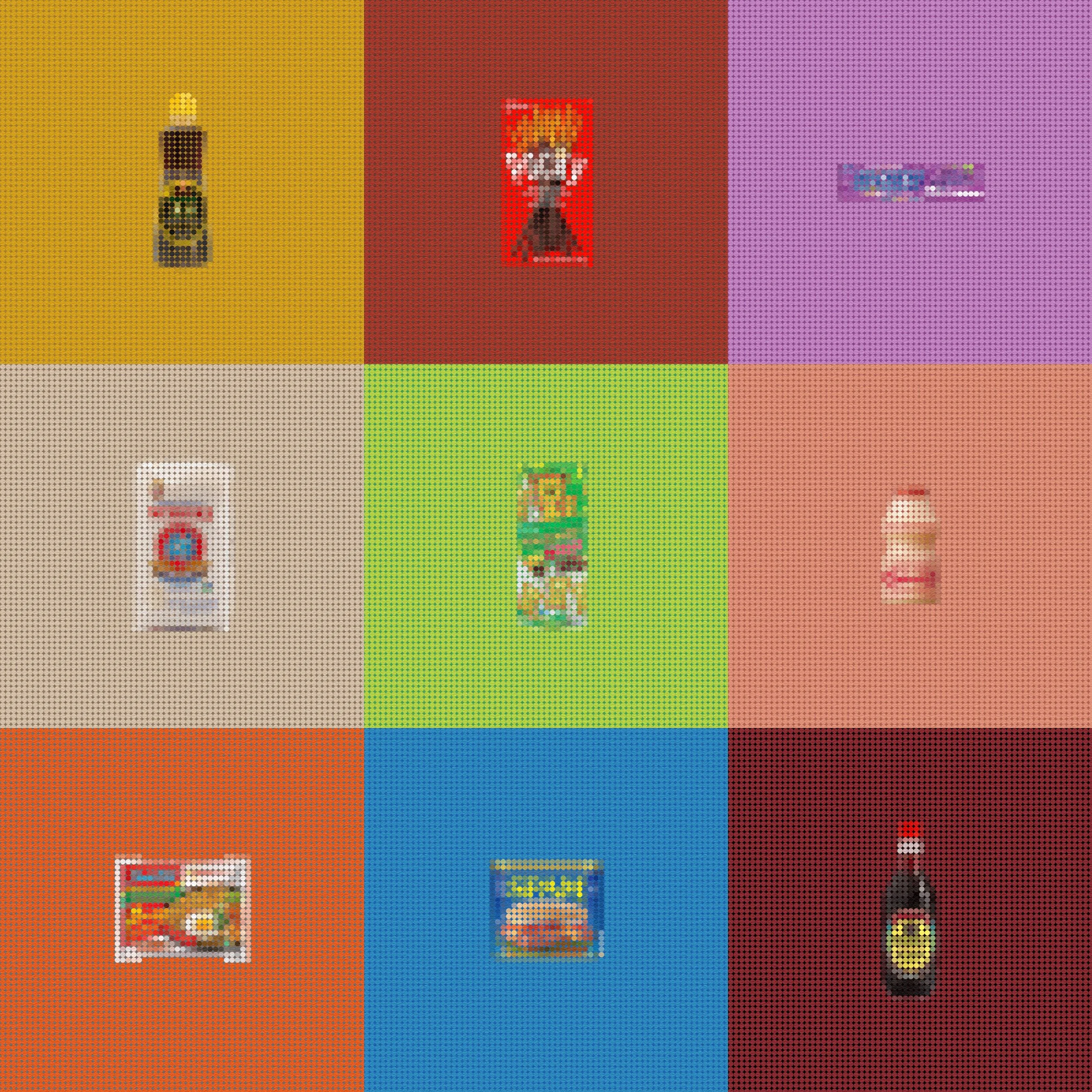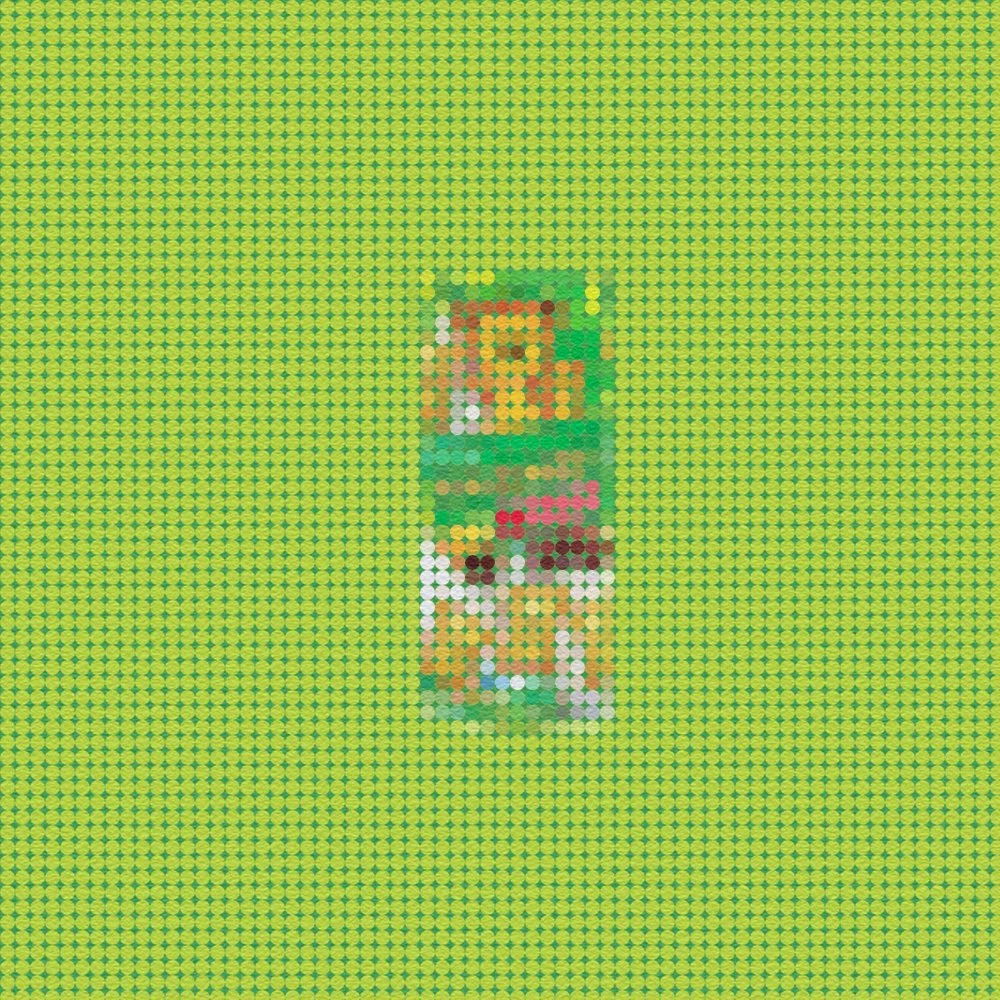The Taste of Home in Digital Form: Stacey Chen
By Cansu Peker
Stacey Chen is a multidisciplinary artist and designer based in Chicago, originally from Taiwan. Her practice moves fluidly between illustration, sculpture, toy and graphic design, industrial design, and digital media — united by a focus on the emotional and cultural resonance of everyday objects. With a background in industrial design, she’s drawn to the way form and function shape not just behavior, but memory and feeling. Her work reflects on the quiet power of the familiar, uncovering meaning in the textures, symbols, and overlooked items that surround us.
Stacey’s process is rooted in close observation and storytelling. She draws inspiration from both Taiwanese heritage and her current environment, reimagining the ordinary in ways that feel playful, precise, and poetic. Whether working by hand or on screen, she balances craft and concept to explore themes of identity, nostalgia, and wonder. Her work has been exhibited internationally and resonates through its ability to transform the mundane into something quietly extraordinary.
We asked Stacey about her art, creative process, and inspirations.
Can you share a bit about your background as a multidisciplinary artist? What first drew you to this field?
I’ve always been fascinated by how art and design can transform the way we see the world around us. I studied industrial design, which taught me to think critically about objects, systems, and the emotions they evoke. Over time, I began exploring ways to move beyond pure functionality and into storytelling, blending fine art, sculpture, digital illustration, and even toy design. What drew me in was this curiosity to capture fleeting feelings — moments of magic hidden in everyday life — and turn them into something tangible.
Hichew
Your work spans a wide range of mediums — from toys to digital art to sculpture. Do you approach each medium differently, or is there a common thread that ties them all together?
Each medium has its own constraints and personality, so I approach them technically in different ways — but conceptually, there’s always a thread of narrative and whimsy that connects everything I make. Whether it’s a toy, a digital mosaic, or a sculpture, I’m always asking: what story does this tell, and how can I evoke a sense of wonder and reflection in the viewer?
Indomie Mie Ramen
How has living in New York and Chicago influenced your creative practice compared to your time in Taiwan?
Living in Taiwan as a child gave me a strong sense of texture—from crowded markets to temple colors—and an appreciation for cultural symbolism. Moving to New York and later Chicago introduced new rhythms, new landscapes, and a quiet nostalgia for what I grew up with. I think that tension between familiarity and unfamiliarity gives my work a sense of searching, of bridging worlds.
Kadoya Sesame Oil
What inspired you to create Pantry of Memories, and how did you select the objects featured in the series?
Pantry of Memories was inspired by the sense of nostalgia I felt when spotting familiar foods in unexpected places. When I first came to the States, Asian food wasn’t nearly as accessible as it is now, so finding even a few recognizable items in a local supermarket felt special, like discovering little pieces of home tucked between unfamiliar shelves. I chose these particular objects because they were some of the rare Asian products I could find back then, and they stood out to me as icons of comfort and familiarity. Each one carries its own quiet story, and together they form a kind of portrait of memory through the lens of food.
Kikkoman Soy Sauce
Why did you choose a mosaic and pixelated aesthetic for this body of work?
I chose a pixelated palette because I felt it highlighted just how iconic these items are to so many Asians. Even when rendered in a fragmented, abstract way, they remain instantly recognizable. The pixelation strips away unnecessary detail but preserves the essence, which speaks to how deeply ingrained these objects are in our collective memory. To me, it was a way of showing that their meaning and familiarity don’t rely on realism. Even in pieces, they still feel whole.
Koala’s Merch
In what ways do you see digital art as a medium for exploring nostalgia and cultural connection?
Digital art lets me approach traditional themes, like memory and heritage, through the lens of contemporary technology. For me, it reflects how culture itself evolves, taking on new forms while preserving its core. Working digitally allows me to reinterpret these familiar objects in a way that feels both modern and timeless, highlighting their enduring significance even in a fragmented, fast-moving world.
Nishiki Sushi Rice
How does working digitally shape your creative decisions differently from working with traditional materials?
Working digitally lets me approach traditional ideas in fresh ways — using the language of screens and pixels to evoke something emotional and tactile. In this series, the pixelated aesthetic reflects both ancient mosaic art and modern digital screens, showing how meaning can still be assembled from small, discrete parts. That’s very much how I see my practice: blending disciplines, bridging old and new, and finding resonance in unexpected formats. Digital tools give me the flexibility to experiment, abstract, and refine while still honoring the handcrafted sensibility of traditional techniques, and that tension shapes every creative choice I make.
Pocky
How do you see your work contributing to conversations about cultural heritage in contemporary art?
I hope my work encourages viewers to reflect on how culture lives in the everyday or iin small, often-overlooked objects that carry deep meaning. By isolating these items and elevating them into art, I want to honor them as quiet carriers of identity and shared experience.
SPAM
Do you envision this series evolving into new formats, mediums, or subject matter in the future?
Definitely. While this series began as digital illustration, I see numerous ways it could evolve into other areas of my practice. I can imagine reinterpreting the concept as a set of collectibles, toy-like objects, turning the familiar food items into tactile, playful forms. It could also extend into graphic or UI/UX projects, perhaps as an interactive digital experience where viewers can “assemble” their own memories from a library of objects. Even in industrial design, there’s an opportunity to bring the mosaic aesthetic into physical products that tell the same emotional story. Honoring everyday objects through a fragmented, nostalgic lens feels natural across all the ways I like to create, and I’m excited to see how it might take shape in new formats.
Yakult
And finally, what is a fun fact about you?
I always keep a secret stash of Asian snacks in my studio—partly for reference, mostly for emergencies.























